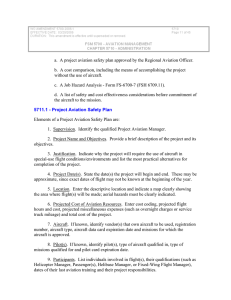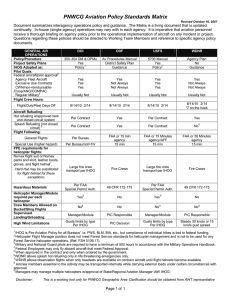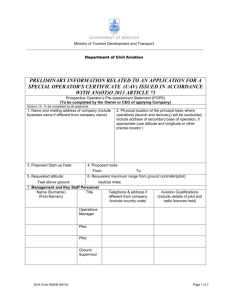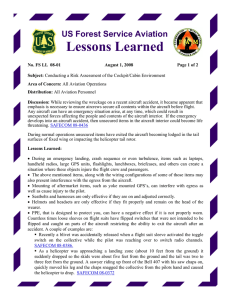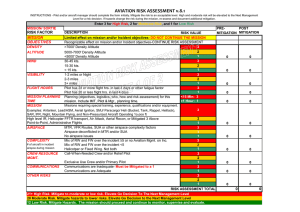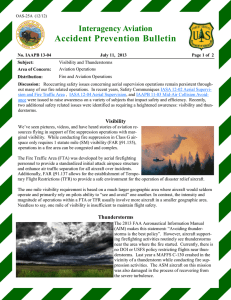APPENDIX 11 – PROJECT AVIATION SAFETY PLAN
advertisement
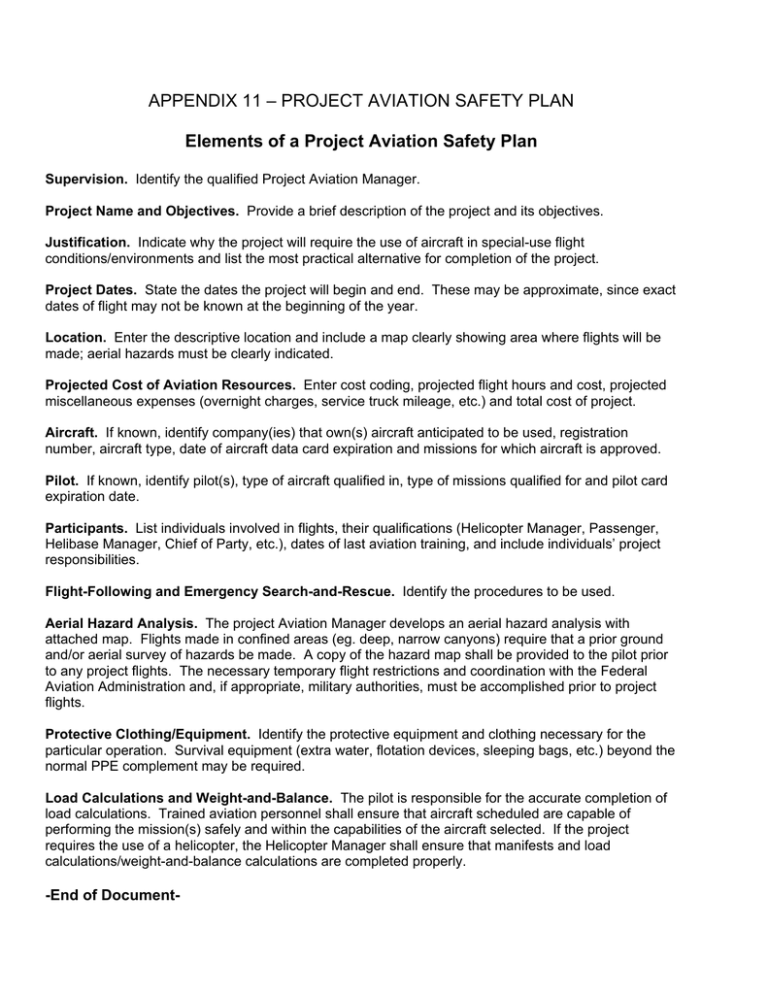
APPENDIX 11 – PROJECT AVIATION SAFETY PLAN Elements of a Project Aviation Safety Plan Supervision. Identify the qualified Project Aviation Manager. Project Name and Objectives. Provide a brief description of the project and its objectives. Justification. Indicate why the project will require the use of aircraft in special-use flight conditions/environments and list the most practical alternative for completion of the project. Project Dates. State the dates the project will begin and end. These may be approximate, since exact dates of flight may not be known at the beginning of the year. Location. Enter the descriptive location and include a map clearly showing area where flights will be made; aerial hazards must be clearly indicated. Projected Cost of Aviation Resources. Enter cost coding, projected flight hours and cost, projected miscellaneous expenses (overnight charges, service truck mileage, etc.) and total cost of project. Aircraft. If known, identify company(ies) that own(s) aircraft anticipated to be used, registration number, aircraft type, date of aircraft data card expiration and missions for which aircraft is approved. Pilot. If known, identify pilot(s), type of aircraft qualified in, type of missions qualified for and pilot card expiration date. Participants. List individuals involved in flights, their qualifications (Helicopter Manager, Passenger, Helibase Manager, Chief of Party, etc.), dates of last aviation training, and include individuals’ project responsibilities. Flight-Following and Emergency Search-and-Rescue. Identify the procedures to be used. Aerial Hazard Analysis. The project Aviation Manager develops an aerial hazard analysis with attached map. Flights made in confined areas (eg. deep, narrow canyons) require that a prior ground and/or aerial survey of hazards be made. A copy of the hazard map shall be provided to the pilot prior to any project flights. The necessary temporary flight restrictions and coordination with the Federal Aviation Administration and, if appropriate, military authorities, must be accomplished prior to project flights. Protective Clothing/Equipment. Identify the protective equipment and clothing necessary for the particular operation. Survival equipment (extra water, flotation devices, sleeping bags, etc.) beyond the normal PPE complement may be required. Load Calculations and Weight-and-Balance. The pilot is responsible for the accurate completion of load calculations. Trained aviation personnel shall ensure that aircraft scheduled are capable of performing the mission(s) safely and within the capabilities of the aircraft selected. If the project requires the use of a helicopter, the Helicopter Manager shall ensure that manifests and load calculations/weight-and-balance calculations are completed properly. -End of Document-


